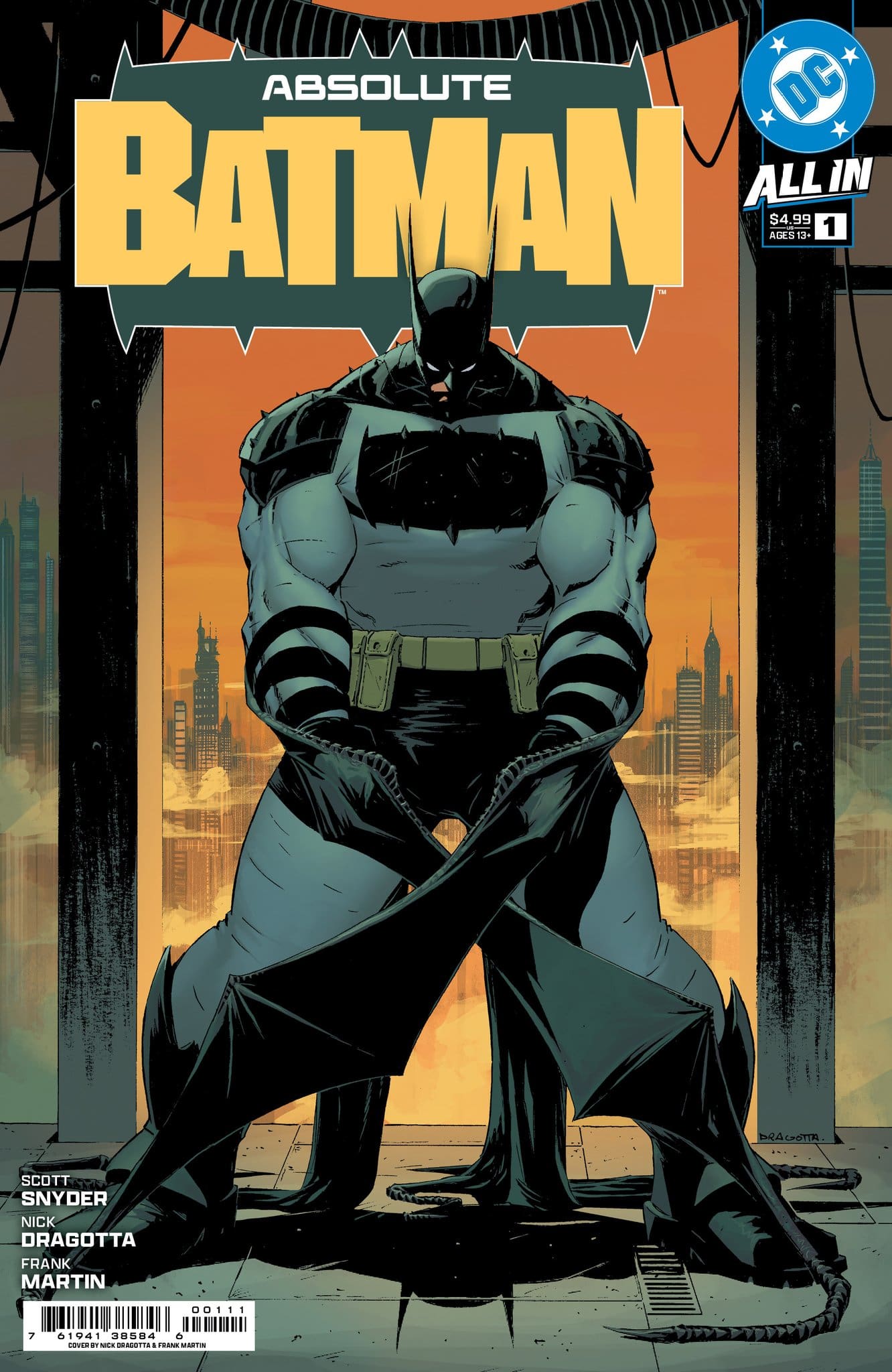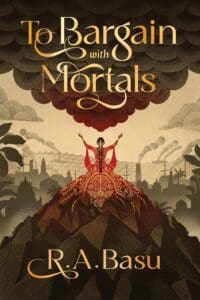
Synopsis
Without the mansion…without the money…without the butler…what’s left is the Absolute Batman!
Review
A violent gang runs amok in Gotham. Only one man can stop them. Sounds like your usual Batman plot. But there’s nothing usual at all about Absolute Batman #1.
Written by Scott Snyder, with art by Nick Dragotta, Absolute Batman #1 completely turns the Dark Knight on his head.
Absolute Batman #1 inaugurates a new era in DC Comics, reimagining the origins of classic DC heroes like Batman, Superman, and Wonder Woman without the shackles of a near century of continuity. Marvel has had tremendous success with this strategy in the Ultimate Comics line, where Miles Morales originated as Spider-Man. For DC, where the approach has been to throw a crisis every decade or so and reboot continuity completely, this is new. For a character as elastic as Batman is, any new interpretation is welcome, but this one really challenges the concept of who Batman is in unexpected ways.
Still, nods to the past abound. The issue begins with gritty narration that recalls Frank Miller’s classic Year One story (Batman #404-407) from 1986, with hints of Miller’s graphic style in Dragotta’s art, especially the title page. Exposition via news anchor follows, again establishing Miller’s influence from another seminal 80s work, The Dark Knight Returns. But then the comic reveals this isn’t the same Batman. In fact, the moody figure roaming Gotham on a high-tech bike is not Batman at all.
It’s Alfred Pennyworth.
This Alfred is not Bruce Wayne’s butler, but it seems a covert operative for an unnamed organization. He’s in Gotham investigating a horrific gang called The Party Animals, who wear gorilla skulls as masks and wreak utter havoc in the city. Along the way, he encounters another mysterious figure shadowing the gang, and here we get our first glimpse of the proper Batman.

This Batman is unlike any in comics. Dragotta renders him as a hulking figure more akin to Thor. His silhouette is essentially the same, but his cape serves alternately as claws to grab villains with and stilts to walk on. Both literally and figuratively, this Batman embodies the physicality of a bat more than any other.
Dragotta’s kinetic style walks a fine line between classic American realism and Japanese manga influences, exaggerating some elements while downplaying others. It’s hyper-violent; it’s super cartoony. It creates a vivid, unpredictable experience that is a real pleasure to read.
Snyder, who wrote an impressive run on the mainline Batman title for years, takes his chance here to really turn things upside down. The story and pages are very dense for how fast they move, with some featuring over twelve panels. It’s a meaty comic book in every way and one that requires a lot of going back over to relish.
This a case example of a great first issue. Snyder gives an origin, a status quo, and a conflict all in supremely confident fashion. He also challenges Batman and his audience by introducing major changes to the character and mythos.
The main drive beyond the differences appears to be deflating the mounting modern criticism aimed at Bruce Wayne – why doesn’t he apply his considerable wealth in more constructive ways – by taking it away from him. This is a Bruce who grew up very, very different than before, so much so that his classic origin is almost completely undone.
Almost.

The impetus to alter Batman’s financial position is most evident in a flashback scene where a young Bruce visits Gotham Zoo with his father. Bruce comments on how a lion – king of the jungle – has it made because the lion sleeps twenty hours a day and is fed steak three times a day. The commentary on status and luxury is fundamental to this new take on Batman, and perhaps necessary given the world he exists in. In 1938, billionaires put their names on all the libraries and hospitals they built for communities. In 2024, they don’t pay taxes at all.
A middle-class Batman isn’t unusual. He’s been without his toys in other stories before. The final page reveals that Batman has truly reversed roles with another major character from the Batman mythos. While that has exciting potential, it also creates a lot of uncertainty. Who is Batman at his core? What does he represent, and then at what point does that simply become another character? The same is true for the other character, who I won’t spoil here, but… you know who he is.
But this story goes further than just altering his financial status. The core of who he is has always been his trauma, and while major elements remain in place – it’s updated for a more modern take on gun violence, sadly – a big part of who Batman is jettisoned. That more than his money changes who Bruce Wayne has always been. It begs questions as to who he’ll be and where the story is going. I’m intrigued, but I’m also left wondering what makes Batman ‘Batman?’
Art is risk, and this is a real risk Snyder, Dragotta, and crew are taking. This is real art. This is a shocking, entertaining, compelling comic that demands an immediate re-read. It demands the next issue right now, darn it, but we’ll have to wait a month. For older fans who maybe have checked out of comics, or new ones who are curious, you won’t want to wait. Run, don’t walk to your local comic book store, and grab a copy of this exciting new series.







Leave a Reply